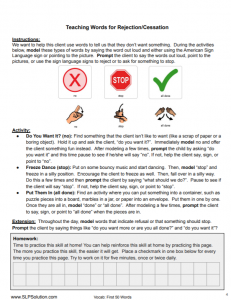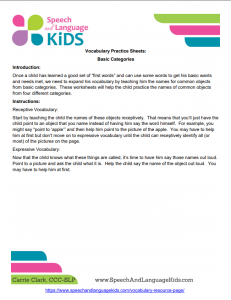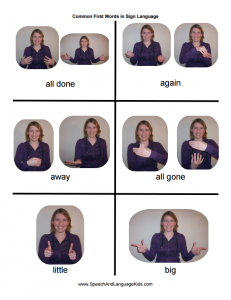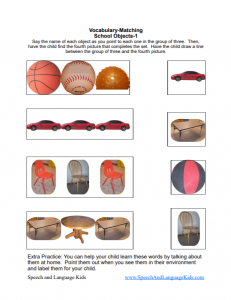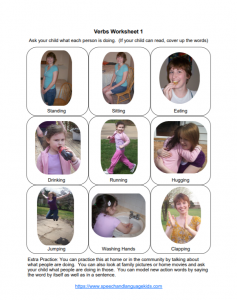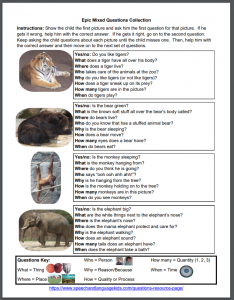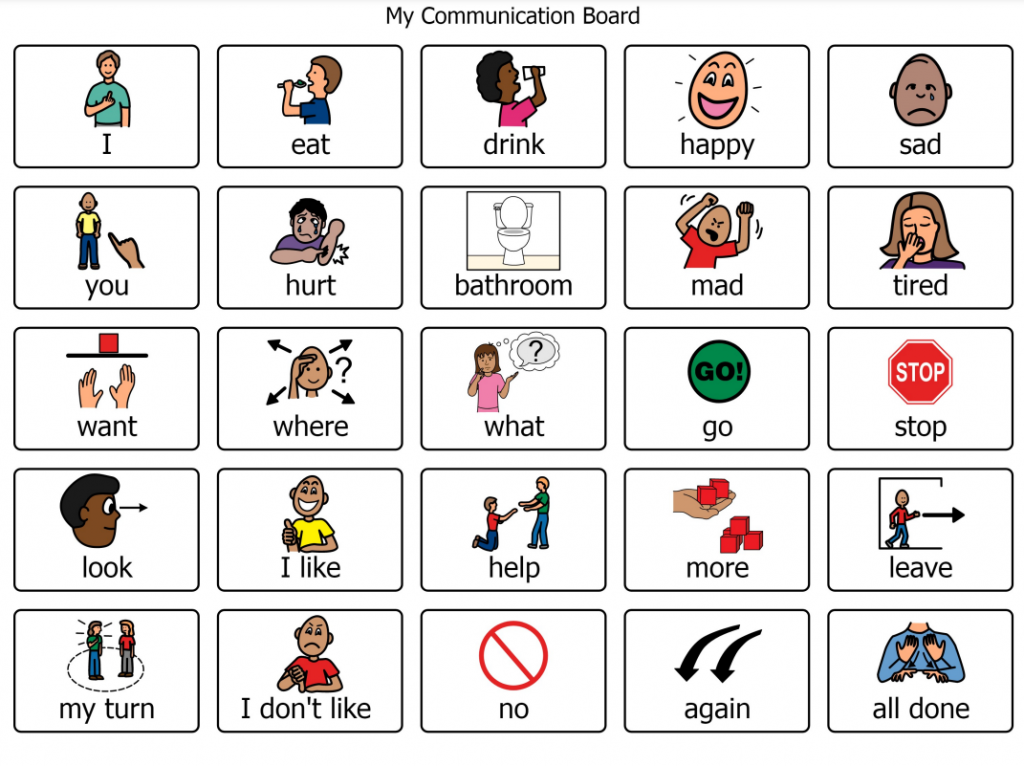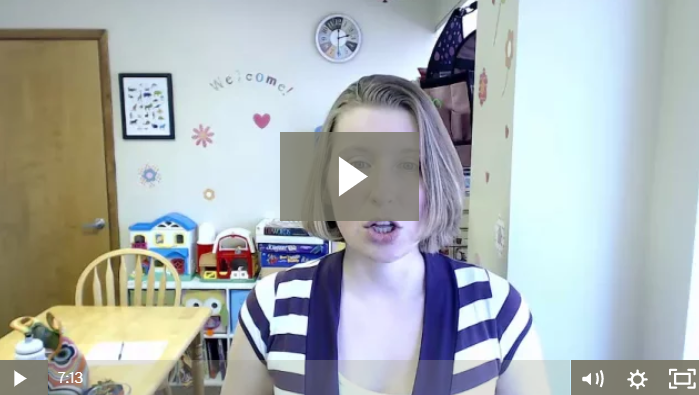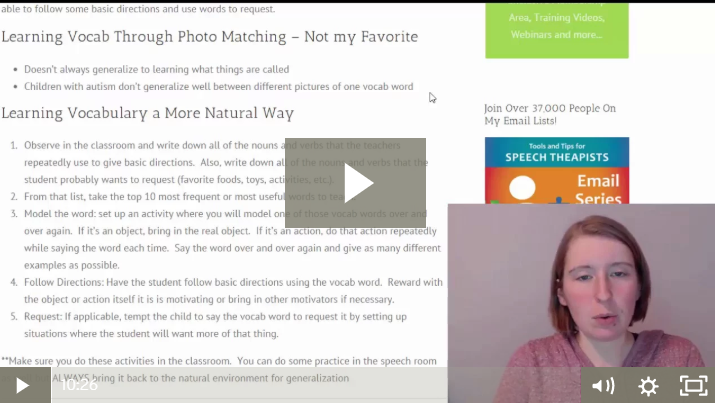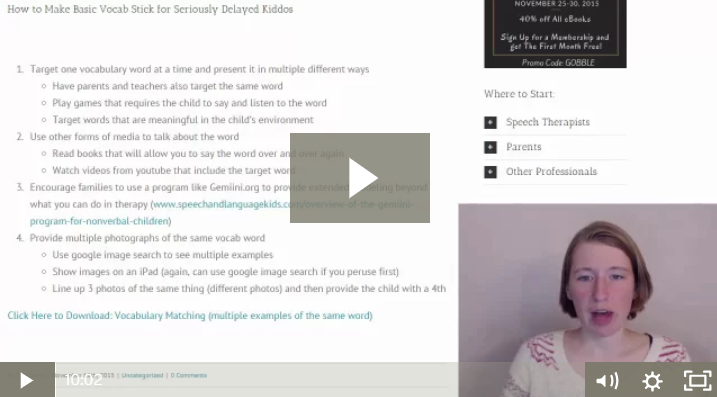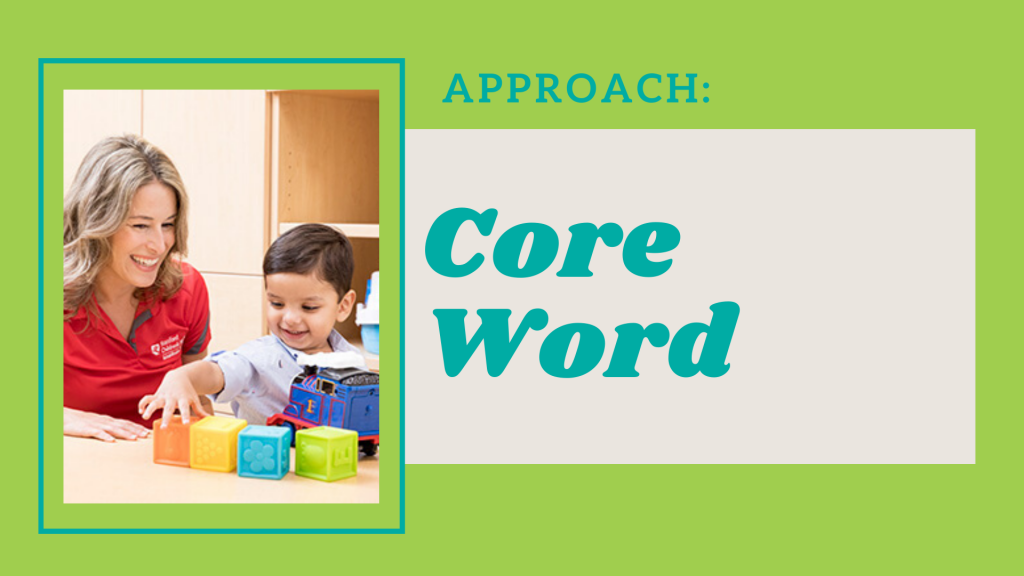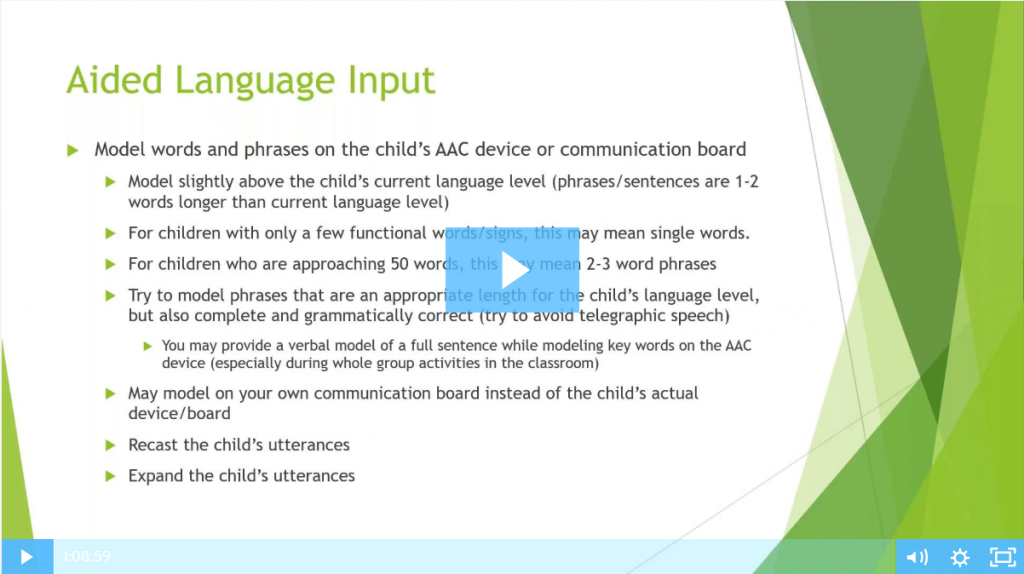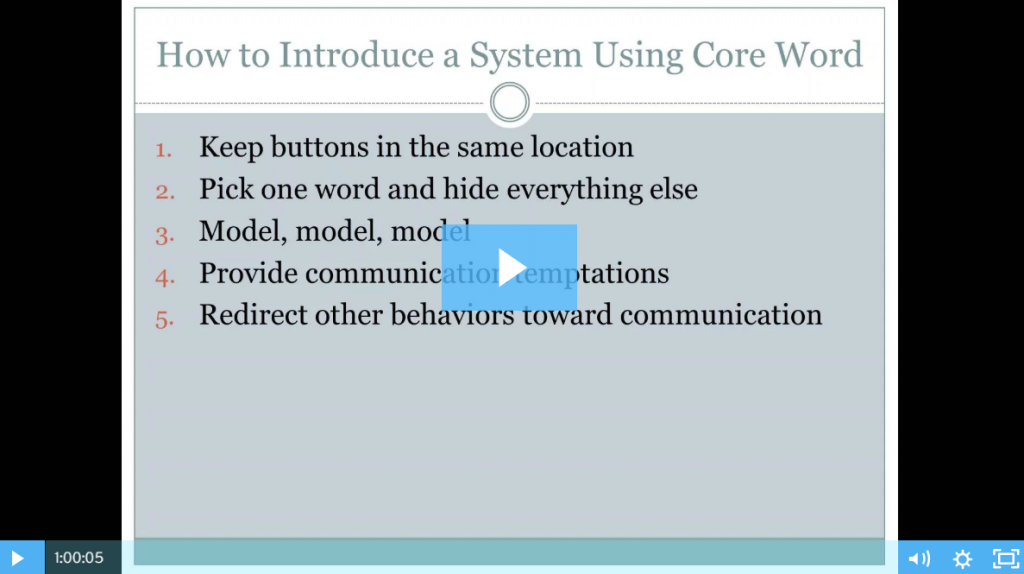Goal: Build Expressive Vocabulary of First 50 Words
Sample Goal:
Client will demonstrate an expressive vocabulary of at least 50 words as reported by caregivers and/or educators using the following rating scale (Client must achieve a 4 or higher on the scale): <When writing this goal, make sure you specify who will complete the rating scale, such as “both a parent and the child’s teacher”)
Rating Scale:
In a typical week, Client uses (speaks, uses sign language, or uses AAC) about this many different words:
5 = More than 75 Words
4 = 50-75 Words
3 = 25-49 Words
2 = 10-24 Words
1 = Fewer than 25 Words
Download the No-Prep Therapy Kit:
We have a start-to-finish therapy kit that will give you everything you need to practice this skill in therapy and send home homework. Click the packet below to open it. Then, print it out and place it in the child’s notebook or binder.
Therapy Phases:
To begin, take an inventory of the types of words that the client is already using expressively. The first fifty words should be comprised of a combination of the following categories, with “nouns” making up the largest percentage. Write benchmark goals for any of the following categories not represented in the child’s vocabulary. These do not need to be addressed in any particular order.
- Non-Existence/Disappearance: In response to modeling and prompting, Client will spontaneously produce single words (using spoken speech, sign language, or AAC) to indicate non-existence and/or disappearance at least 5 times during a 10-minute activity (examples: “no”, “all gone”, “away”).
- Rejection/Cessation: In response to modeling and prompting, Client will spontaneously produce single words (using spoken speech, sign language, or AAC) to indicate rejection and/or cessation at least 5 times during a 10-minute activity (examples: “no”, “stop”, “all done”).
- Recurrence: In response to modeling and prompting, Client will spontaneously produce single words (using spoken speech, sign language, or AAC) to indicate recurrence at least 5 times during a 10-minute activity (examples: “more”, “again”).
- Action: In response to modeling and prompting, Client will spontaneously produce single action words (using spoken speech, sign language, or AAC) at least 5 times during a 10-minute activity (examples: “go”, “eat”, “throw”, “open”).
- Attribute: In response to modeling and prompting, Client will spontaneously produce single attribute words (using spoken speech, sign language, or AAC) at least 5 times during a 10-minute activity (examples: “big”, “little”, “dirty”, “wet”).
- Possession: In response to modeling and prompting, Client will spontaneously produce single words (using spoken speech, sign language, or AAC) to indicate possession during a 10-minute activity (examples: “mine”, “your”, “hers”).
- Location: In response to modeling and prompting, Client will spontaneously produce single words (using spoken speech, sign language, or AAC) to indicate location at least 5 times during a 10-minute activity (examples: “here”, “there”, “in”, “on”).
- Nouns: In response to modeling and prompting, Client will spontaneously produce nouns (using spoken speech, sign language, or AAC) at least 5 times during a 10-minute activity (examples: “dog”, “shirt”, “boy”).
What’s Next?
- If you have worked on all of the above word classes and the client still does not have an expressive vocabulary of 50 or more words, target specific words individually (instead of classes of words) to expand the vocabulary.
- Once the client has achieved an expressive vocabulary of at least 50 words, you can target further expansion of vocabulary as well as building two-word utterances. Click here for our kit for expanding vocabulary of nouns in basic categories.
Supplemental Materials
Here are some other resources that may help you when working on this skill:
Vocabulary Practice Sheets: Basic Categories
These worksheets provide extra practice for learning common words in these categories: clothing, vehicles, animals, and toys
Common First Words in Sign Language
Using sign language is a great visual support for helping children start using their first 50 words. Here is a directory of American Sign Language signs for common first words.
Vocabulary Matching Activity: Common School Objects
This simple activity shows multiple examples of photos of objects commonly found in schools and encourages matching. Great for extra practice on common objects.
Extra practice for targeting verbs in therapy.
Mixed Vocabulary and Questions Pack
Extra practice for common nouns, grouped by category. This kit contains questions as well but you can just use the pictures for vocabulary modeling.
This simple AAC board will provide visual choices for a child who is learning first words.

